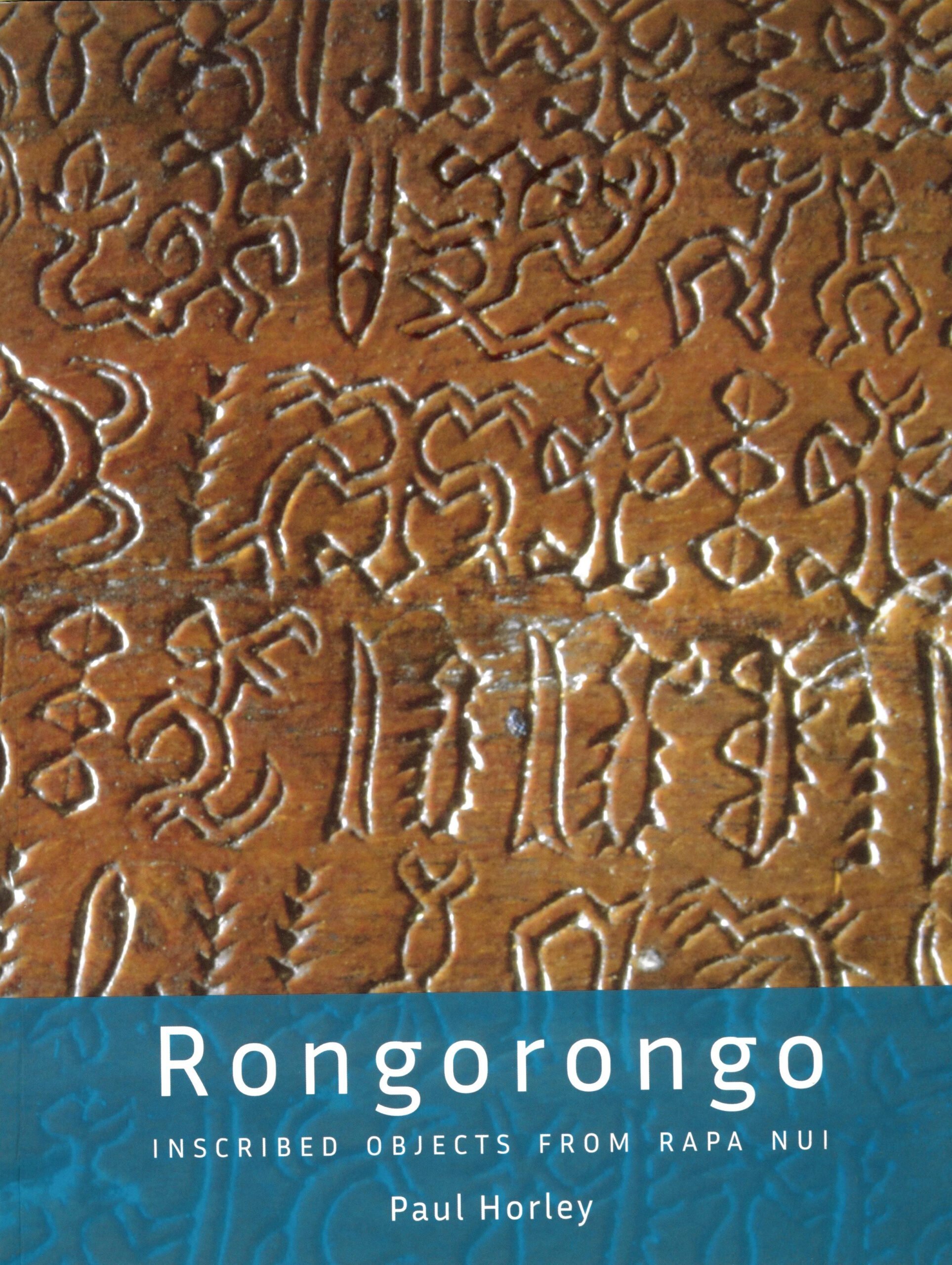The new reference for Rongorongo researchers
Rongorongo studies – the study of the unencrypted script of Rapa Nui – is a task that reminds us of the ancient Greek tragedy Sisyphus. A new encyclopedia detailing years of research by Paul Horley, entitled Rongorongo. Inscribed objects from Rapa Nui, now available from Rapa Nui Press.
Rongorongo - Inscribed objects from
Rapa Nui
Paul Horley
Rongorongo studies
Rongorongo is one of the few written scripts invented by mankind, and was first discovered on the small island of Rapa Nui in the 1860s. The scripts consist of figures carved in alternating lines into a piece of wood. "The original name - or perhaps the description - of the script is said to have been kohau motu mo rongorongo (tablet incised for chanting out), shortened to kohau rongorongo. There are also said to have been more specific names for the texts based on their subject matter. For example, kohau taꞌu (year tablet) annals, kohau îka (fish tablet) were lists of people killed in war (îka, meaning "fish" is a poetic expression for a war casualty), and kohau ranga "table of refugees" were “lists of war refugees." (adapted from https://en.wikipedia.org/wiki/Rongorongo).
At one time, rongorongo tablets were common on Rapa Nui, but either due to the influence of missionaries or due to their own ignorance of a script like no other - after many of the most learned individuals had been kidnapped and later perished, during the Peruvian slave raids in 1862 - could read more. Many of the rongorongo tablets were burned or stored in secret caves in the following years. A few tablets were saved and ended up in museum collections around the world. The amount of source material that has been preserved seems too small for scholars to decipher the script with a brute-force method, and only slow, thorough studies of the source material, the historical context and the legends of the island can bring anyone closer to the words literally carved into the wood.
Eight inscribed tablets were saved by the island missionaries, by order of their bishop in Tahiti, Florentin Étienne Jaussen, in the years 1869-1870 (Horley 2021:16-17). Although research on the script began at this time, the first comprehensive cataloging and study of these tablets was carried out by the German scholar Thomas Barthel and published as Grundlagen zur Entzifferung der Osterinselschrift (Basis for the Decipherment of the Easter Island Script) in 1958.
During Thor Heyerdahl's archaeological expedition to Rapa Nui in 1955-56, several manuscripts authored by local Rapanui elders, who have tried to translate individual signs and write down ancient songs, came to light. One extensive manuscript was given as a gift to the Norwegian explorer, while two smaller fragments were traded to the Kon-Tiki Museum. These documents were studied in collaboration with Soviet scholars, who analyzed rongorongo tablets in the collection of the Peter the Great Museum of Anthropology and Ethnography in St. Petersburg. Some results of these studies were published in Reports of the Norwegian Archaeological Expedition to Easter Island and the east Pacific. Volume 2. Miscellaneous Papers (1965).
The last effort to organize the Rongorongo corpus came in 1997 when the New Zealand linguist, Steven Roger Fischer, published his Rongorongo: The Easter Island Script: History, Traditions, Text. The book represents the first comprehensive documentation of Rongorongo, Easter Island's enigmatic script and Oceania's only known writing system from before the twentieth century. The author tells the full story of rongorongo's exciting discovery and the many attempts at a decipherment and provides full transcriptions of all 25 surviving rongorongo inscriptions along with detailed photographs of nearly every incised artefact. The book also compiles a comprehensive list of more than 1,000 references from previous rongorongo studies.
Both Thomas Barthel and Steven Roger Fischer succeeded in creating and updating the rongorongo inscriptional corpus, providing a solid foundation for the researchers dedicating their efforts to the analysis of this script. The continued development of documentation and imaging techniques since then allowed further improvements in the representation of Rapanui glyphs. Currently, several research teams in various parts of the world are working on 3D documentation of rongorongo objects. This book provides some first steps in this direction, presenting the new improved traces of the entire rongorongo corpus completed by Paul Horley after a detailed study of the original objects (and also their casts and photographs) in museum collections around the world. In the process of this research, he and his collaborators have discovered many new details about rongorongo signs, and used modern digital methods to enhance the damaged areas of the tablets.
Several rongorongo tablets digitized by the National Museum of Natural History in Santiago, Chile can be viewed online as highly detailed 3D models.
In his new book, Rongorongo: Inscribed objects from Rapa Nui, Paul Horley provides a comprehensive overview of the field of rongorongo studies, its history, the corpus of inscriptions itself, and presents a discussion of the main characters used in the Rapanui script. It is hoped that this new book will further expand and strengthen the basis for future studies of rongorongo. In a herculean task, we believe that Horley has succeeded in laying the foundations for future studies.
Rongorongo
Inscripted objects from Rapa Nui
by Paul Horley



